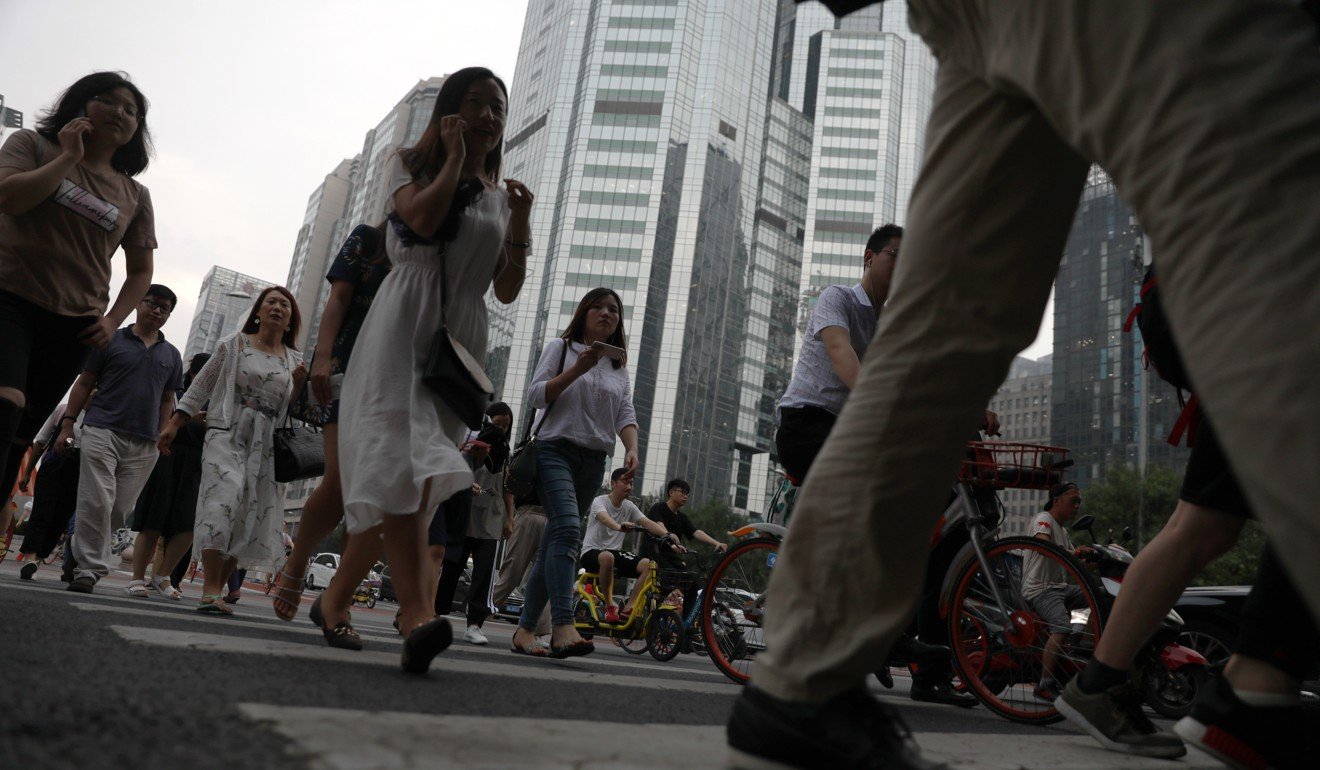
Chinese banking sector warned it faces day of reckoning as decade of easy money ends
A senior regulator tells a forum the US$38 trillion sector cannot expect government to allow further credit expansion
A moment of truth is arriving for China’s vast banking industry after a decade of exuberance, a senior regulator warned on Thursday.
With the US Federal Reserve on track for further monetary tightening and the US-China trade war continuing, the yuan will face continued downward pressure, said Yu Xuejun, the chairman of the supervisory board for key state-owned financial institutions at the China Banking and Insurance Regulatory Commission.
Yu predicted that the industry, which has US$38 trillion in assets, will see a surge in non-performing loans, but told a financial forum in Beijing that the government cannot allow another round of large-scale credit expansion as it is still trying to address the problems generated by previous stimulus efforts.
China pumps up spending on infrastructure once again
“The previous large increase in bank credit already poses an overhanging risk [to the Chinese economy] and the external monetary environment has obviously changed,” Yu cautioned.
“The continued interest rate hikes by the Federal Reserve have exerted depreciation pressure on currencies like the yuan and make it difficult for [the government to allow more] monetary expansion,” he added.
Yu’s comments come after the growth rate in world’s second largest economy eased slightly in the second quarter to 6.7 per cent.
The outlook is for continued slowing in the second half of this year, given the investment growth rate plunged to new low of 5.5 per cent in the first seven months while Washington has threatened to slap heavy tariffs on an additional US$200 billion of US imports from China.
A new round of US tariffs on $16 billion worth of Chinese imports went into effect on Thursday, with Beijing retaliating immediately with its own levies on the same amount of American goods.
According to Yu, previous economic stimuli relied heavily on investment – in particular, infrastructure spending – driven by looser monetary conditions to ensure sufficient credit.
“The unavoidable result is excess money supply growth, the worsening of asset bubbles and a rapid increase in macroeconomic leverage,” he said.

While China’s official figures put the non-performing loan ratio at 1.86 per cent at the end of June, the real level of bad assets on Chinese bank balance sheets could be much higher if shadow banking activities are brought back onto their books.
A few small lenders have already seen their non-performing loan levels jump as economic growth has slowed. For instance, Guiyang Rural Commercial Bank, a small bank in the southwestern province of Guizhou, saw its non-performing loans ratio rise to 19.5 per cent at the end of last year from 4.13 per cent in 2016.
China’s money supply reached 167.7 trillion yuan (US$24.5 trillion) last year, three times the level 10 years ago, based on the broad M2 measure. The 2017 level was equivalent to 200 per cent of GDP.
At the same time, China’s banking system assets have ballooned to 260 trillion yuan as the end of June, more than four times the 62 trillion yuan at the end of 2008.
Is China pouring good money after bad by bailing out P2P lenders?
The purchasing power of Chinese citizens has declined significantly, given the deprecation of the yuan against foreign currencies and rising inflation domestically, Yu said.
“If you take a 100 yuan note and check out how many groceries you can buy at the supermarket, it will be very different from 10 years ago,” Yu said.
While Beijing is telling banks to speed up lending for local government infrastructure projects to stabilise the economy, it wants to avoid repeating the problems that would be caused by an all-out stimulus like the one in 2008, when massive government spending programmes were rolled out to counter the external shock from the global financial crisis and banks lent trillions of yuan to finance the spending spree.
Unlike Western economies that rely on capital market for corporate funding, China’s state-owned banking institutions extend the vast majority of credit in the domestic financial system and follow the government’s directives on which sectors to support.

